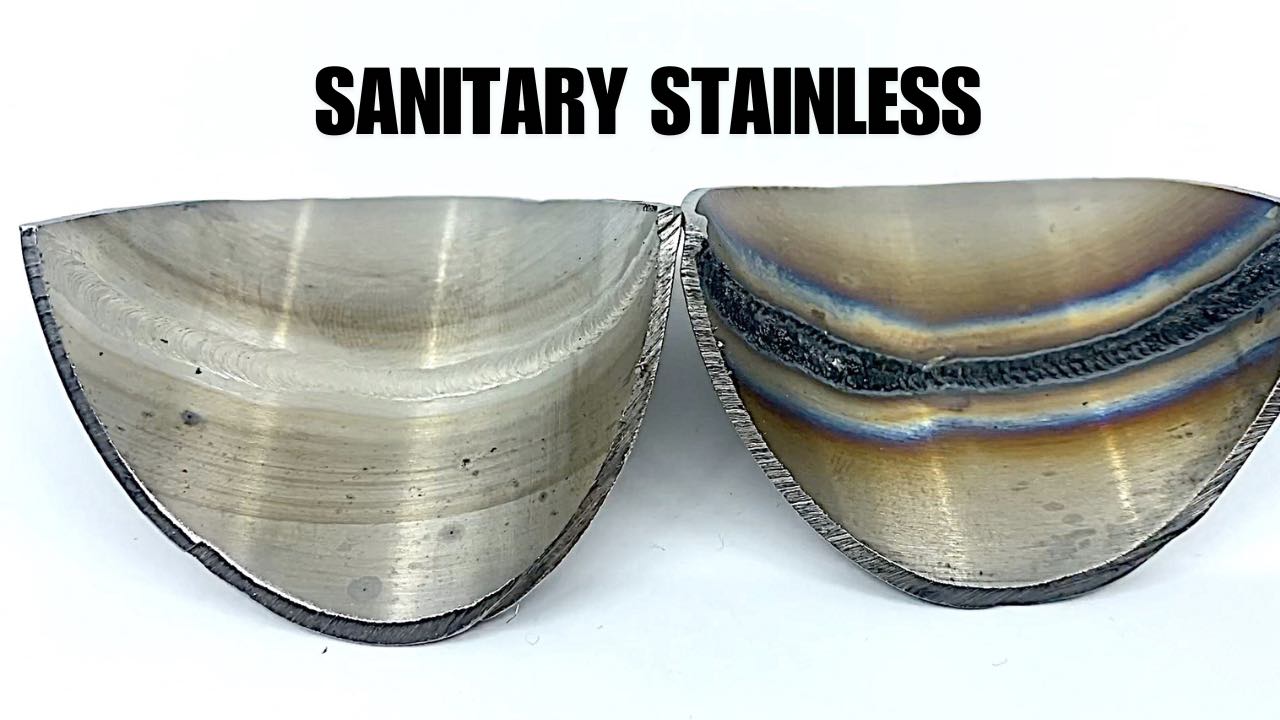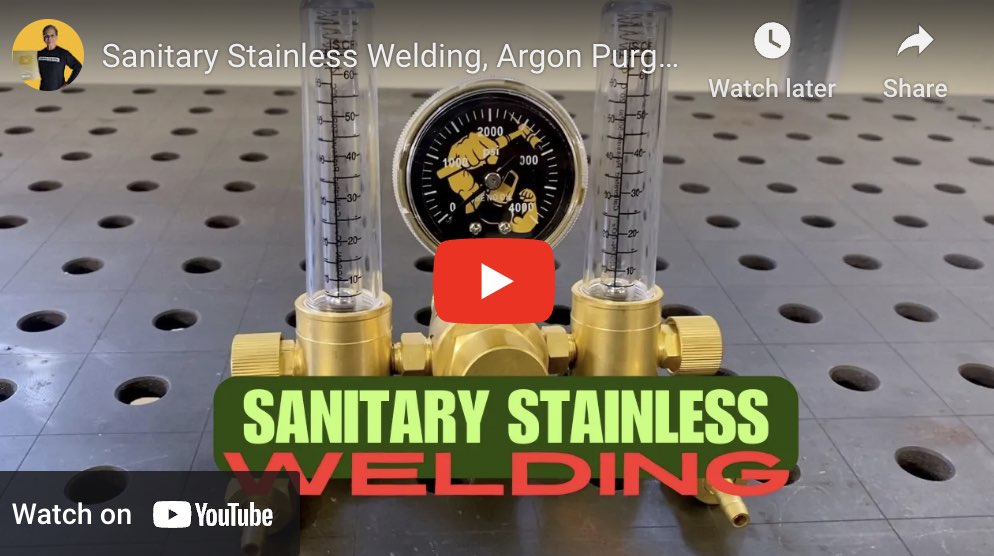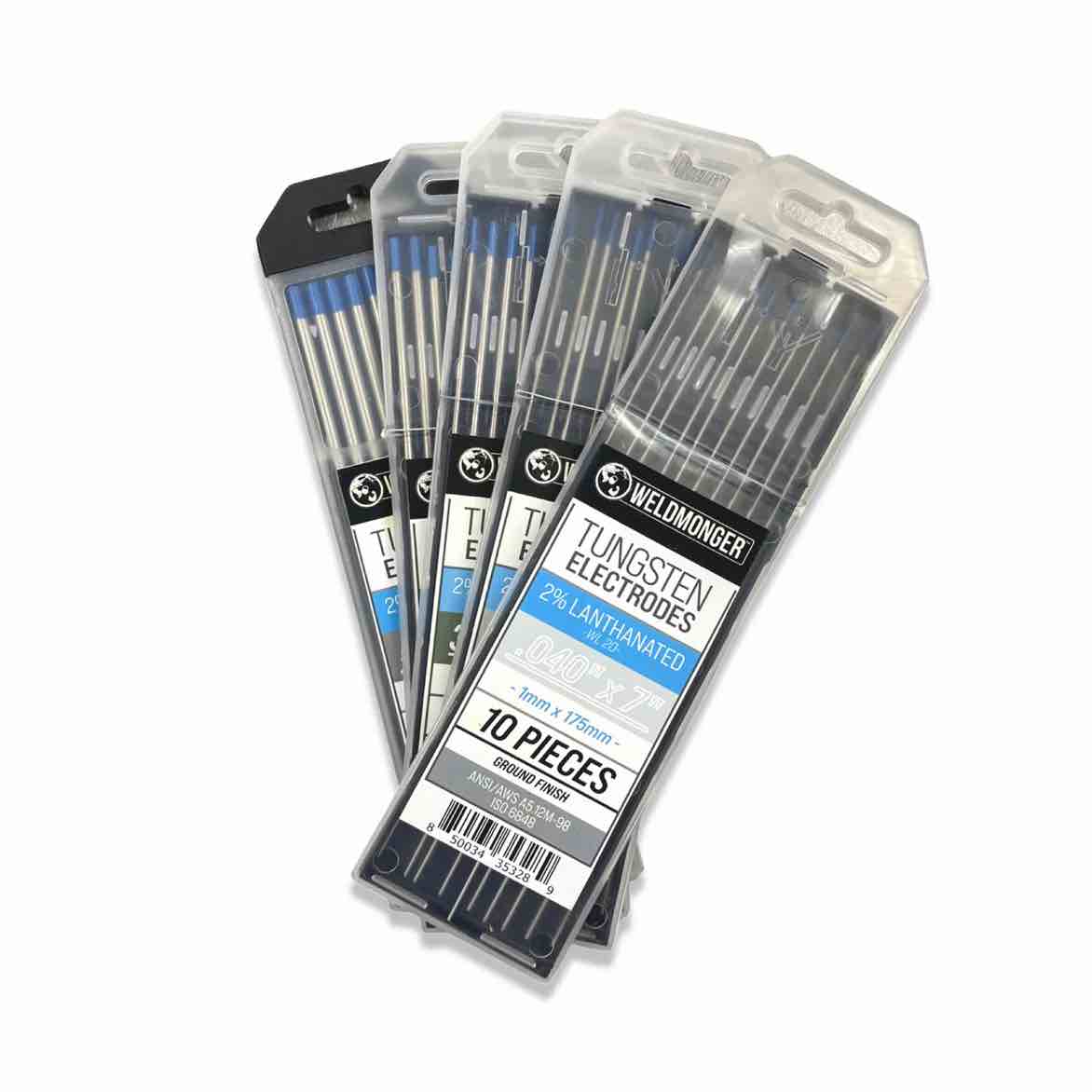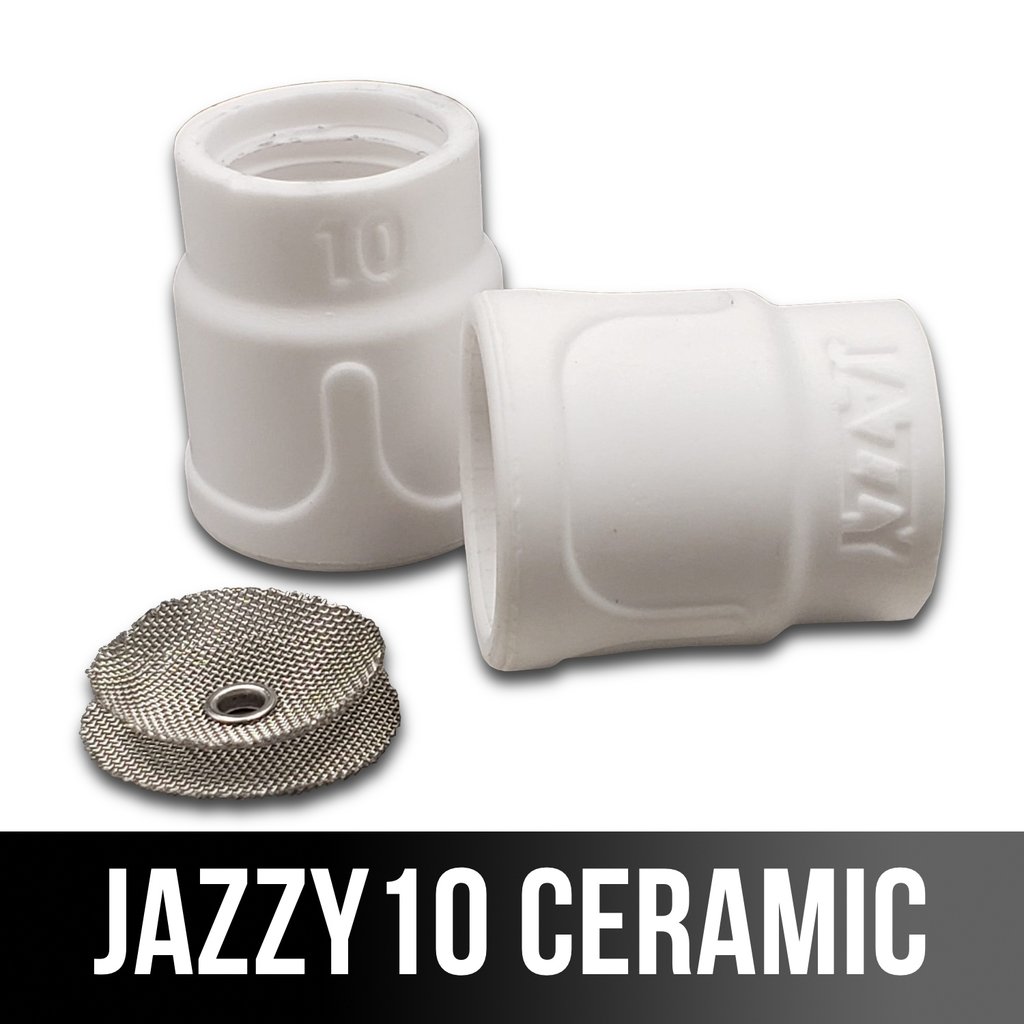TIG Welding Stainless Steel Pipe
- HOME
- TIG WELDING
- Tig Welding Stainless Steel Pipe
Scroll down for Videos on TIG welding Stainless Steel Pipe and Sanitary Stainless Tube

This Table of contents has Quick Jump links to topics
bridge tacks vs penetrated tacks for tig welding stainless pipe
tungsten electrode for tig welding stainless
filler metal for tig welding stainless steel
avoiding carbide precipitation
Improving corrosion resistance of Stainless Steels by electropolishing
Sanitary Stainless Welding with Purge Tips
If you want to get started with Sanitary Stainless Welding, this video will be the best jump start for you
- HOME
- TIG WELDING
- Tig Welding Stainless Steel Pipe
Bridge tacks vs penetrated tacks for tig welding stainless pipe
Penetrated tacks are required by some welding codes and specifications and penetrated tacks require an argon purge.
But purging the inside of the pipe before the first tack weld is made takes extra time
Not all procedures, codes, or specs permit bridge tacks but sometimes bridge tacks are used to save time.
Bridge tacks are tack welds that bridge the outside of the pipe and do not penetrate the sharp part of the bevel or inside of the pipe.
Bridge tacks are ground out as the pipe is welded.
Some fab shops will even use mig for bridge tacks and then the welder purges and welds the joint and cuts the bridge tacks out as he welds out the pipe joint.
Purging tips
Argon is the most common gas for purging.
Remember that argon is heavier than air and displaces oxygen from the pipe.
Think of purging with argon like filling a pipe with water.
The water is heavier than air and will seek the low places and displace the air....
But only if there are properly placed vents to prevent trapped areas.
Just like household plumbing, you need proper vents in order for the argon to move freely and completely displace all the air.
In order to get a proper purge, you need vent holes in the topmost areas to allow air to be displaced.
You will usually be using some type of tape to close off ends and cutting an X with a razor will allow pressure to escape when finishing a weld.
Another often ignored tip is water or moisture inside the pipe.
Even a drop of water can mess up a purge so make sure all water is removed from the inside before purging.
Best Tungsten electrode for tig welding stainless
The Best tungsten for TIG welding Stainless Steel pipe is still 2% thoriated.
But 2% thoriated has received some bad press about it being radioactive.
No worries, there are some really good alternatives that are almost as good for tig welding stainless.
- CK worldwide LaYZr (chartreuse tungsten) works great for stainless as well as aluminum
- E3 (purple tungsten) works great for stainless as well as aluminum
- 2% lanthanated (blue tungsten) works great for stainless as well as aluminum and has a very high amp capacity on both DC and AC.
- 2% ceriated (grey tungsten) stays sharp on stainless but not great for high amperage aluminum welding
Filler metal for tig welding stainless steel
TIG welding filler metal is in stock at Weldmonger.com
Filler metal for TIG welding stainless steel pipe is usually specified by a welding procedure.
Usually the closest match is used.
304L is the most commonly welded stainless pipe and ER308L is the most common filler used for 304L stainless
316L stainless is used where more corrosion resistance is needed and ER316L filler rod is usually specified.
321 stainless is used a lot in motorsports as well as aerospace and either 321 filler or 347 filler is used depending on procedure
Here is a link to a filler metal selection chart for stainless steels
Avoiding carbide precipitation in Stainless
Carbide precipitation is stainless steels is caused by the metal being too hot for too long.
When 300 series stainless steel is held above 800F for prolonged periods, the carbon molecules and chromium molecules will migrate and combine to form chromium carbides.
This makes for areas that are chromium depleted and more prone to corrosion.
Obviously, the stainless metal needs to reach melting temperature in order to make a weld but the goal is to minimize how long the stainless steel is in the 800-1200F range.
This is typically accomplished by interpass temperature limits, travel speeds, amperage, chill fixturing, etc.
Stainless steel pipe procedures will often have what is known as interpass temperature requirements. For example, if the procedure has a 200F interpass limit, then you will need to allow the metal to cool to below 200F before welding the next pass.
Avoiding cross contamination on Stainless
Take steps to avoid cross contamination of stainless steel.
use only dedicated abrasives that have only been used on stainless.
use stainless wire brushes that have only been used on stainless.
Allowing shop dust from grinding carbon steel to contact stainless can also cause problems down the road so make sure to keep a clean area and wipe down stainless with a solvent like acetone or alcohol before welding.
TIG welding stainless steel pipe requires following a few best practices:
Root pass needs an argon purge and a dual flowmeter is a convenient way to get a purge with only one argon tank.
Limit heat input by getting a puddle started quickly and getting moving quickly to avoid heat buildup
Use Gas lens cups like a jazzy 10 ceramic or Furick 12

















